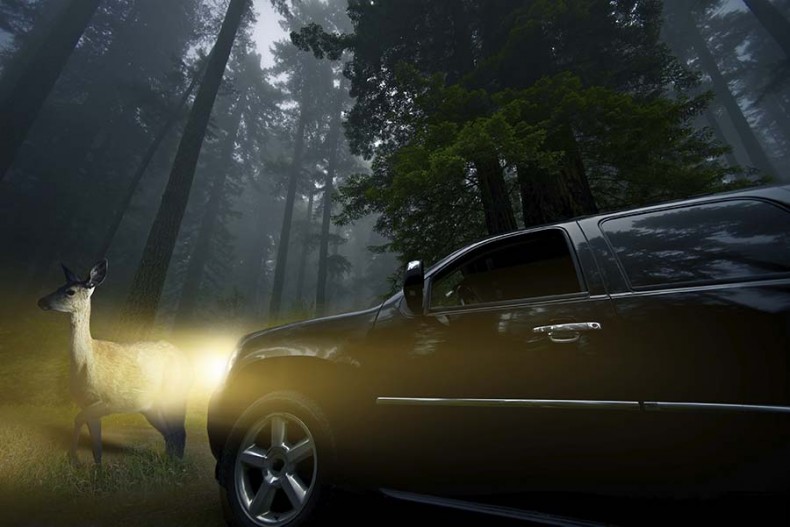A deer in the headlights = Trouble on the highway
Vehicle collisions with deer are becoming more common. Drive carefully during the late fall mating season.
By Carole HowellIt was just a flash of movement followed by impact, and the scene wasn’t a wooded rural road. The unwelcome surprise bounded out between a bank and a schoolyard. Luckily our experience ended with only a totaled car and some badly jarred nerves. The deer, however, wasn’t so fortunate.
Nearly 18,000 animal-related crashes were reported last year in North Carolina, with approximately 90 percent involving deer. From 2012 to 2014, that resulted in more than 3,300 human injuries, 11 fatal, and nearly $145 million in property damage. Depending on your coverage, your auto insurance may not pay for the damages.
In suburban Wake County, there were more than 2,900 animal versus vehicle collisions in the same period — by far the highest of any other county — followed by Guilford, Pitt and Duplin counties.
Western counties like Jackson, Graham and Swain, where there are considerably fewer drivers, reported the fewest number of collisions. As our state continues to develop and deer habitat is reduced, we can only expect encounters to increase.
Eye spy
“While a crash involving a deer can happen any time of year, the majority of collisions occur from October through December during mating season,” said Lt. Jeff Gordon of the North Carolina State Highway Patrol. “Incidents are most common during 5 to 7 a.m. and 6 to 9 p.m. when deer are active and limited lighting makes it difficult for motorists to see deer on or near roadways.”
Gordon says the best way to avoid a deer collision is to remain focused and alert, scanning the road from side to side. Increase the distance between your vehicle and other cars. If the car ahead of you hits a deer, you may also be involved in the crash. Always make sure that everyone in the car is securely buckled in.
Slow down in posted deer crossings and heavily wooded areas. Statistics indicate that most deer-vehicle crashes occur near bridges or overpasses, railroad tracks, streams and ditches, where deer can find easy crossing.
Gordon recommends using your high beams when possible. If you spot a deer, immediately reduce your speed, even if it’s a considerable distance from the road. Blow your horn with one long blast to scare the deer away. A deer can clear 15 feet in a single leap, and they often travel in groups, so don’t assume the road is clear if one deer has already passed.
While you may be caught off guard, resist your impulse to swerve to avoid impact. It could cause your vehicle to run off the road, flip or veer into oncoming traffic.
Oh, deer!
If you strike a deer, pull onto the shoulder, turn on your hazard lights, and call 911. Remain in the vehicle until help arrives, says Gordon. If your car is inoperable, turn on your flashers and exit the car, standing on the shoulder well off the side of the road. If you carry road flares, reflective triangles or flashlights, use them to alert oncoming drivers, but don’t do anything to place yourself in harm’s way.
“Even though you may be tempted to help an injured animal, you shouldn’t,” advises Geoff Cantrell of the N.C. Wildlife Resources Commission. “A frightened animal that’s only injured could panic and become aggressive or otherwise hurt you.”
North Carolina respects and appreciates its wildlife, but not when it threatens life and property. Because deer rarely look both ways before crossing the street, stay alert to stay alive.
-
Share this story:



